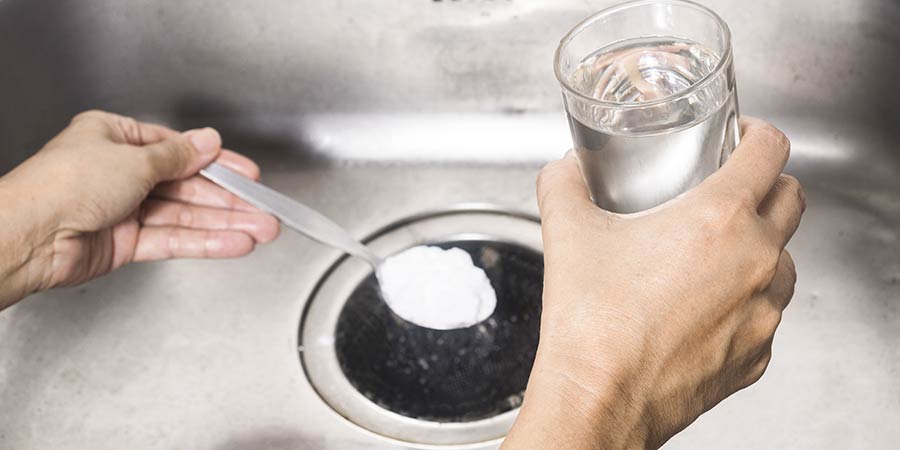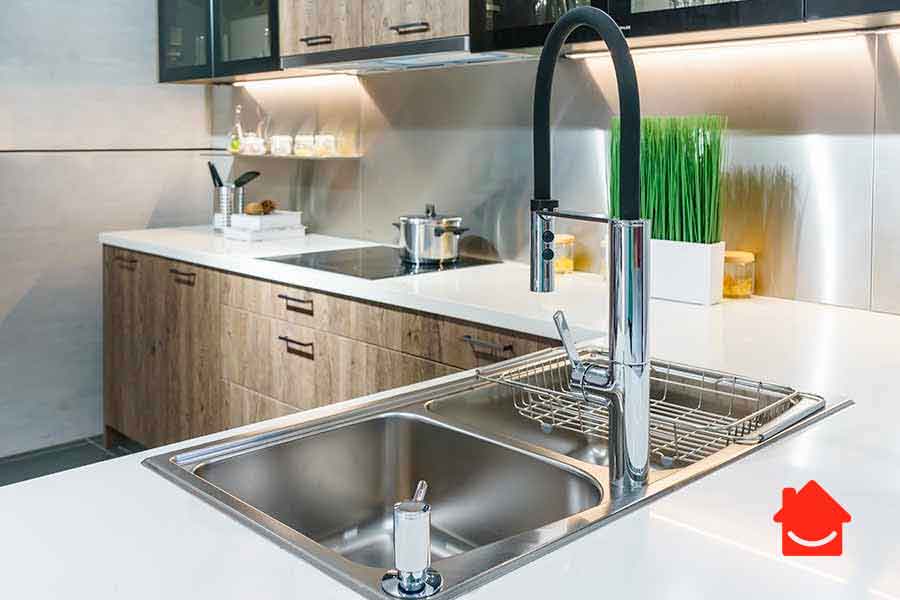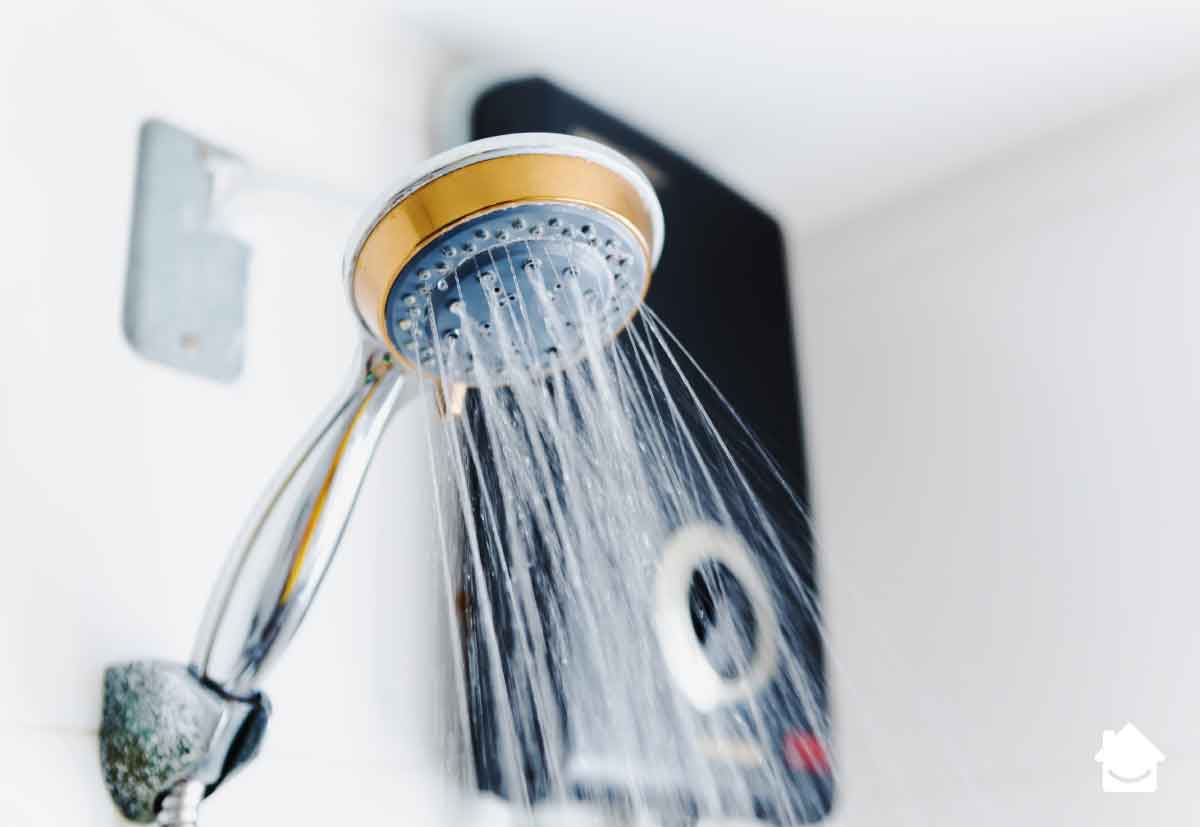We all want our kitchens to smell fresh and clean. Especially as it’s the place where we prepare all our food. There’s nothing more off-putting than a terrible odour coming from the sink!
In this article, we’ll explore why drain smells occur, how to get rid of them and prevent them from coming back.
Why kitchen drain smells occur
There are two main reasons why your kitchen drain may smell:
- A build-up of food and debris in the drainpipe. Anything you put down your sink other than water can stick to the sides of the pipes or sit in the U-bend. And over time, bacteria will cause it to decay and smell.
- Smells coming up your pipes from the sewer. If there’s no water in your U-bend due to a leak or evaporation, sewer gases will be able to waft up your pipe. The solution is to investigate the U-bend for leaks or obstructions. To fix, you may need to remove the U-bend and clean it.
In some rare cases, kitchen smells are caused by mould. If you think that could be your problem, read our article on how to get rid of mould to fix it.
What to do if your kitchen sink smells
Diagnose the cause of the problem:
- The water is draining slowly or not at all: Debris is clogging the pipe, causing a blockage and the smell.
- The smell is of rotting food: Decaying food, fats, oils and grease are sticking to the sides of the pipe.
- The smell is like rotten eggs: Sewer gases are escaping up the pipe due to a problem with the U-bend.
Kitchen sink smells are easily fixed by unclogging blockages, cleaning the pipes with a ready-made chemical or home-made solution or fixing the U-bend.
If you try all the methods described below, but still smell sewer gases, professional help may be needed.
How to get rid of the smell
Below is a list of the different methods you can use to get rid of nasty kitchen sink drain odours.
For rotting food smells, try one of the DIY or chemical cleaning methods. For sewer gas smells follow the instructions for checking your U-bend.
DIY drain cleaning methods

The following methods are useful for getting rid of rotting food smells.
Boiling water
- Boil a pan or kettle full of water
- Slowly pour it down the plughole, a splash at a time
- Wait 5 minutes
- Run the cold tap to force any remaining grease to congeal and flush through
White vinegar
- Pour a small amount of white vinegar down the plughole
- Let it stand for 30 minutes
- Rinse with hot water
Baking soda and vinegar
- Pour half a cup of baking soda down the plughole
- Pour 1 cup of vinegar down the plughole
- Let the solution foam up and leave it to stand for a few hours
- Pour some boiling water down the plughole to flush everything through
Chemical cleaning methods
The following methods are useful for getting rid of rotting food smells.
Bio-enzyme drain cleaner
This is an eco-friendly, non-toxic chemical cleaner. It works by using enzymes that eat the food debris without causing any damage to your pipes.
Ready-made drain cleaner
Ready-made drain cleaning chemicals can be bought from most hardware stores or supermarkets.
But beware. These chemicals can be dangerous. Always follow the instructions printed on the packaging and wear rubber gloves and goggles.
Check the U-bend
The U-bend pipe under your kitchen sink is also known as a sewer gas trap. This U-bend should always be full of water and acts as a barrier to stop sewer gas escaping out of the plughole.
Help get rid of sewage gas smell by checking the following:
Has the water in the U-bend evaporated? This can happen if you’ve been on holiday and not run any water for a while. The simple solution is to run some water to fill up the U-bend.
Is there a leak in the U-bend? Check for drips or damp patches under the sink. If there’s a leak, call a professional plumber to fix it for you. You can get more help on how to diagnose leaking pipes here.
Is there an obstruction in the U-bend? If there’s still a blockage after cleaning, remove the U-bend with a wrench and clean it out with a wire brush.
How to prevent drain odour
It’s easy to prevent your sink from getting smelly. All you need are a few good habits and routine maintenance. Try the following:
- Place a drain screen over your plughole to stop lumps of food entering your pipes.
- Avoid pouring fat or grease down the drain. Instead, use kitchen towel to soak or scrape up fat from your pans before washing them.
- Every time you boil the kettle, pour any left-over water down the plughole to kill off bacteria.
- Pour baking soda down your drain about once a week, or if you’re going away and won’t be using your sink for a while.
- Schedule regular service checks. Having a professional plumber check your pipes regularly will ensure they stay clean.
When to call a professional
If you’ve tried all the methods in this article and still find that your kitchen drain stinks, call HomeServe for assistance.
To protect yourself and your home from plumbing and drainage problems in future, HomeServe offers plumbing and drainage insurance cover for peace of mind.




